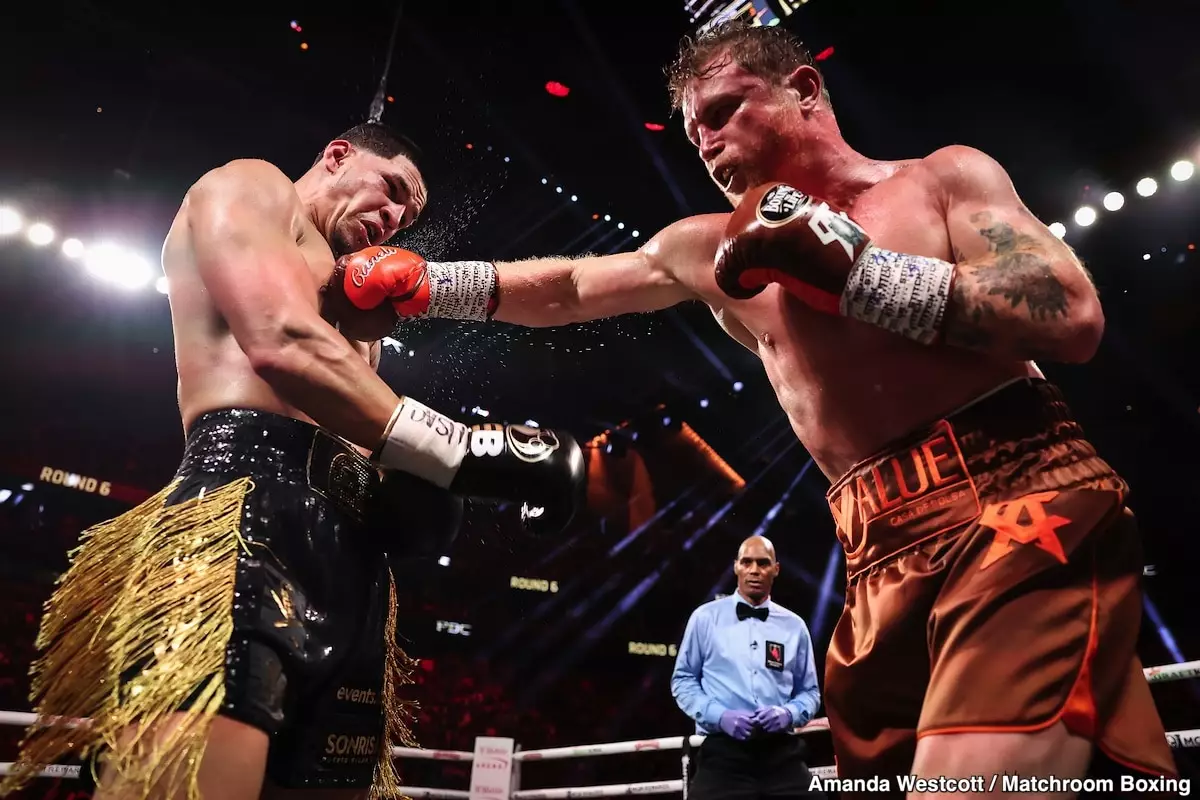Boxing, often hailed as the “sweet science,” is riddled with intricacies, not just inside the ring but also in the relationships between fighters, promoters, and fans. Recently, the spotlight fell on a highly anticipated bout between Canelo Alvarez and Edgar Berlanga, an event marred by the conflicting perspectives of Oscar De La Hoya, Alvarez’s former promoter and a legendary figure in the sport. This scenario provides an intriguing lens to explore how narratives in boxing can shape public perception and ultimately impact the sport’s future.
Oscar De La Hoya made waves leading up to the fight with his announcement that he would be abstaining from watching the Alvarez vs. Berlanga matchup. Instead, he opted to attend a UFC event, casting doubt on the significance of the boxing fight with his prediction that it would be “another lame ass fight.” De La Hoya’s response to the fight generated significant chatter, demonstrating how influential a promoter’s voice can be in shaping audience expectations and choices. With a history-rich career and a brand that still carries weight, his dismissal of the fight raised eyebrows and instigated discussions on whether it was a clever marketing ploy or genuine disdain for his former ally.
Moreover, De La Hoya’s pronouncement to save money for fans suggested that he believed the fight would be a lackluster affair. This public skepticism reflects a broader trend in boxing where promoters can sway public opinion, often overshadowing the fighters themselves. This irony is heightened given that De La Hoya, in his prime, would likely have championed the very bout he disparages today.
Contrary to De La Hoya’s expectations, the match between Canelo and Berlanga turned out to be an engaging contest. Canelo Alvarez delivered a performance surpassing many observers’ forecasts, demonstrating his skills even in the absence of a knockout victory. The fight was a showcase of high-caliber boxing, where Berlanga—even nicknamed “The Chosen One”—proved he was far from just another opponent. He displayed impressive resilience and tactical acumen, navigating Canelo’s power punches with commendable tenacity.
As the fight unfolded, it became clear that both fighters showcased their unique attributes. Alvarez demonstrated his seasoned technique, while Berlanga’s spirit and ability to absorb punishment signaled that he could hold his own against elite competition. Herein lies a fundamental takeaway from boxing; outcomes and predictions often falter in the face of live competition, underscoring the unpredictability that keeps fans engaged.
In the wake of the bout, De La Hoya’s reaction was striking. He maintained his critical stance, utilizing social media to convey his disappointment and to revive the narrative that the event had not lived up to its potential. By labeling the fight as boring and deriding Alvarez’s performance with implications of limited action, he positioned himself as a contrarian voice. This was, perhaps, less about the fight itself and more about his fraught relationship with Alvarez, which has soured significantly over time.
Critics would argue that De La Hoya’s response stems from bitterness, a sentiment fueled by his estranged partnership with Alvarez. With every denouncement, he risks alienating not just Canelo but also the fans who may have genuinely enjoyed the fight. Observers may question whether De La Hoya’s comments are reflective of genuine concern for the sport or merely a vendetta against a rival who once thrived under his banner.
As the dust settles, the boxing community is left speculating on Canelo Alvarez’s next steps. Would he take on a rematch with Dmitry Bivol or perhaps turn his attention to a showdown with Terence Crawford? The buzz surrounding these potential matchups suggests that Canelo still holds significant allure, bridging generations of boxing fans with each fight. De La Hoya may remain adversarial, but the excitement surrounding Alvarez is undiminished.
The Alvarez-Berlanga fight serves not only as a testament to the intricacies of boxing techniques but also as a larger commentary on the emotional landscapes wielded by stakeholders within the sport. It highlights a critical reality: relationships in boxing can deeply influence narratives, perceptions, and even outcomes. Ultimately, fans are left pondering the real value of a fight against the backdrop of personal grievances—a lesson that goes beyond the ropes into the heart of the sport’s politics.

